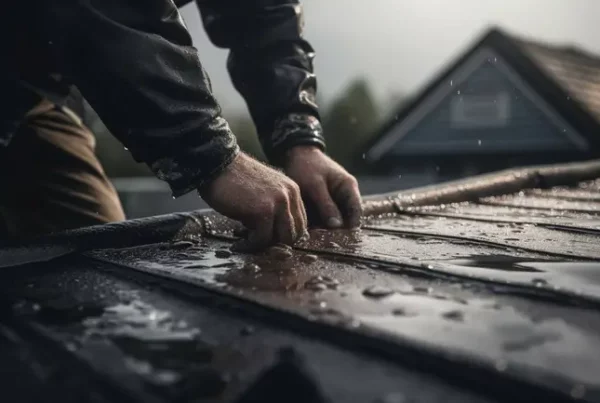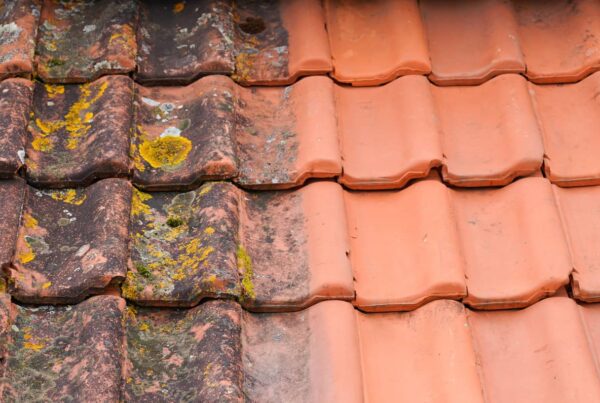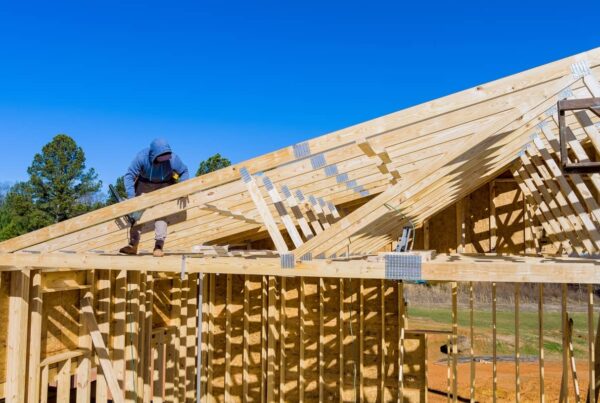
The roof is an important area of the home that needs to always be in tiptop shape. It protects us from the outside elements and holds our home together. Being in the south, we are subject to hurricanes and other strong storms so our roof can take a beating.
Any homeowner can do a roof inspection carefully and safely from the ground and you just need binoculars. Doing this once a year will hopefully prevent expensive issues. Not sure what to look for? Here is a roof inspection checklist for the areas that you should check for: flashing, shingles, vent pipes, and moss or lichen growing on the roof to name a few.
Let’s take a look at why a roof inspection is important, the various areas of the roof checklist in detail, roof replacement, what if you find issues, roof replacement, some other areas you will want to look at since you are there, and when to contact a professional.
Why a Roof Inspection is Important
Roof maintenance is important to make sure nothing is missing or broken. We never know if after even a little storm if there will be any issues. At least once a year (during warmer months is best) using a roof inspection checklist can help you keep problems away if you notice issues early.
Most people don’t know what to look for so this checklist should help. Roofs last about 15-20 years, depending on the environment and roof type.
While you are checking out the roof from the ground, there are other areas that you can take a look at for any possible issues.
Roof Inspection From the Ground
As mentioned earlier, you can use binoculars to see what is going on with the roof and stand on the ground to do this. Some people who feel comfortable will climb the ladder to check the various areas below:

Flashing
This is a material that is installed to direct water away from various areas on the roof. It usually surrounds chimneys, skylights, and vents. You will be looking at the caulking on the flashing to see if it is cracking or if there are any rust spots. Flashing should be in place where the vertical side of the house meets the roof. Sometimes, you will not be able to see/inspect the flashing since it should be in place under the shingles.
Shingles
Look for any missing, loose, broken, blistered, curled, or split shingles. Depending on the type of roof you have, there may be various indicators of issues. If you have asphalt shingles, look to see if there are any dark spots. This will indicate that the granular coating is worn away. Where ridges and hips meet on the roof you may notice shingles missing as well.
Exposed Nails
If you see any nails exposed, there could be leaks in the roof. Exposed nails should be coated with tar to prevent rusting.
Roof Inspection Checklist: Downspouts, Vents, Gutters, Etc.

Downspouts
A downspout is a pipe and it is installed on every 20 feet of gutter and carries the rainwater to the ground. Downspout extensions extend 4 to 6 feet away from the house, but 10 feet when possible. Make sure that they are firmly in place and the water is going away from the house. Unfortunately, if they don’t extend out far enough, you can have water sitting near the home and possibly leak in.
Vents
Check offset ridge vents, ridge vents, and soffit vents for good air flow and ensure all areas are properly sealed/secured. This is a common area for exposed nails.
Gutters
Check the gutters to make sure they are cleaned out so the water will flow freely. If not, there will be a back up of water in the home and you will need to check for water leaks in the home.
Vent Pipes
Make sure that the lead flashing boots is still around the vent pipes on the roof and providing a sealant.
Check that it is not cracked/chipped/chewed by squirrels.
Moss and Lichen
Lichen comes from algae and acts like a sponge, keeping the roof damp. If you see this on the roof, use vinegar to try to get it off. The vinegar will kill the organic matter. The moss develops from the wet roof and leaving this on the roof will cause the granules in the shingles to deteriorate and loosen. As a result, the asphalt and fiberglass will be exposed. Moss and Lichen can also be a sign that the roof is decaying.
What If You Find Issues When Doing a Roof Inspection Checklist
There are some things that you may be able to replace on your own, such as shingles. However, it is recommended to pay a professional to do this work. This way, there is a warranty on the work and it will be done by someone who is trained. Homeowners don’t need to be climbing on the roof unless they know what they are doing. Professionals will charge various prices for any shingles, etc. to replace.
If you need to replace shingles, think about Architectural shingles. They are decorative but also can withstand wind from 110 to 130 miles per hour. Also, they can last about 30 years. However, being in the south will knock a few years off the expectation.
Roof Replacement
If your roof needs replacing, the national average for an asphalt roof is $7500. However, if you plan to sell one day in the next few years, you will get that money back because you will be able to list the house for more because of the new roof. It adds value to the home and peace of mind to future buyers. Additionally, if you replace your roof, make sure that roof sheathing is added.
How to Fix Any Issues
Call a professional to come out and help if you have any issues. Something’s are better left to someone with experience and training. If it seems like an easy DIY and you want to tackle it, you can.

Other Areas to Check After Your Roof Inspection Checklist
Chimney
If you have a shake or shingle roof and a chimney, make sure you check the flashing around the chimney and vertical walls. Wood has acid in it and can eat away at the flashing.
Make sure you have a chimney cap on to keep the animals and their nests out. A good time of the year to install this, if you don’t have one already, is in the summer or fall. This is also a good time to inspect it and check if you need additional maintenance .
Negative Grading
Walking around the house, take a look at the land. Does it slope towards the house? If yes, this is negative grading– to fix this, add in soil and plants to even out the land.
Eaves on the House
If you have eaves, make sure they are clean and free of holes. If you see holes, seal them up.
Stucco
Also, look at the stucco on the home. Are there any cracks? Not all cracks in stucco need fixing. If it is less than 1/8 of an inch, you can fix it with Quikrete. More than 1/8 in. (credit card can fit in it) and you need a professional .

HVAC System
Check the HVAC system while you are outside. These systems usually last about 10-15 years but do lose a few years in the coastal areas. Also, they do need a tune up probably twice a year to extend their life.
Drafty Doors and Windows
Lastly, check for drafty doors and windows. While you walk around the outside, take a look at your windows and doors. Is the weather stripping still good or need replacing? Can you slide a dollar bill under the door? If yes, then you have a draft and need to fix it.
When to Call a Professional
Call a professional if you need help checking out the roof, maintenance, or any other issue around the house. Home inspectors are trained and experienced and can check your roof for you.
Conclusion
Checking the roof is important two times a year if possible. You want to catch the start of any problems early and fix them. Using the checklist will help so you know what to look for if you choose to look yourself. Call Waypoint Property Inspection to inspect your home in Tampa, St. Petersburg, Lakeland, Orlando, Palm Beach, Ft. Lauderdale, and surrounding areas.
Have a question? Comment below.



